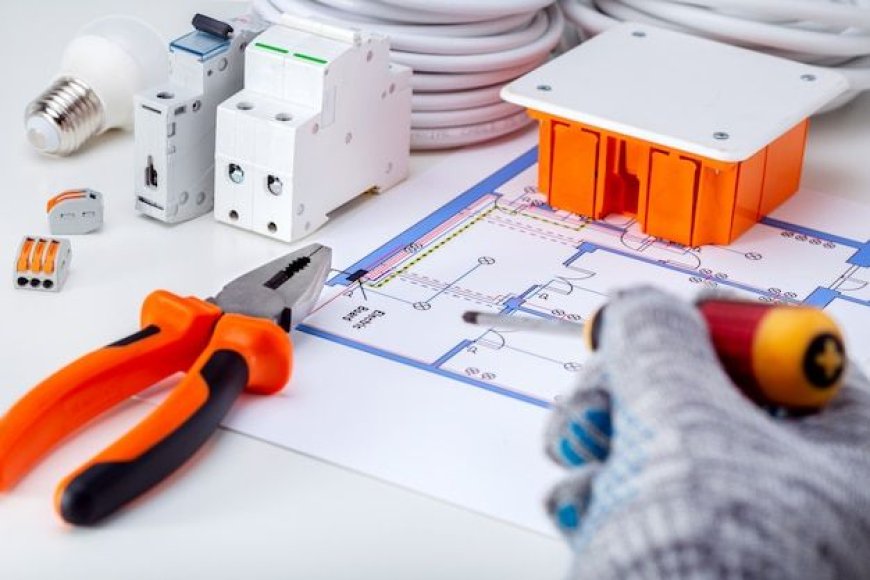How to Choose the Best Electrical Estimating and Takeoff Software?
Discover how to choose the best electrical estimating software and learn what to look for, how it saves time, and why it matters for accurate construction costs.

Choosing the right electrical estimating software can make or break your construction workflow. The first step to winning bids and staying profitable is accurate estimating. The right platform helps you avoid budget overruns and keeps your project timeline in check. However, not all software is created equal. You must know your exact requirement. A smart investment here can streamline your entire process from bid to build. Let us walk through everything you need to know to make the right choice.
Key Things to Consider Before Choosing Electrical Estimating Software
Know Why the Software Matters
When you run a construction business, your estimates are everything. A single mistake in the cost report can eat into profits. Electrical estimating software helps eliminate that risk. It gives you tools to calculate labor, material, and equipment costs precisely. It also allows you to reuse templates for future jobs. You are not starting from scratch each time. That speeds up your bids and helps you win more work. Beyond that, these tools reduce human error. When you automate calculations, you can focus on strategy and management. The software takes care of the math.
Understand the Features You Need
There are plenty of bells and whistles in today’s software platforms. However, not all features matter for every business. Before buying anything, consider your workflow. Do you manage complex commercial jobs? Do you handle a few small residential builds per year? The scale of your work changes what features you need. Top-tier electrical estimating software should include built-in formulas, cost databases, material libraries, and tax calculators. Cloud access is another major plus, it lets you estimate from the jobsite, not just the office. Some platforms are bundled with Takeoff software, while others are standalone. Be sure the product fits the way you work.
Evaluate User Interface and Learning Curve
A powerful tool is useless if you cannot figure out how to use it. That is why it is smart to look for software with an intuitive layout. Clean dashboards, clear commands, and easy navigation. Try out a demo before you commit. Many vendors offer trial versions for this reason. If you and your team cannot get comfortable within a few hours, move on. You do not want to spend weeks learning a complicated system when simpler options exist. Smooth user experience means faster onboarding, especially for growing teams.
Don’t Overlook Integration Capabilities
Your electrical estimating software should not live in a silo. In today’s digital ecosystem, integration is everything. Can your estimating tool connect with your accounting system? What about your project management software? Strong integrations mean less manual work. They allow for real-time updates across platforms. For example, if your estimate changes, your budget can reflect that instantly. Some tools even integrate directly with platforms used by your Construction takeoff firm. That saves time and reduces the risk of miscommunication.
Look for Scalability and Customization
Your business today might look different in six months. That is why you need software that grows with you. Look for platforms that support customization. For instance, custom fields, custom reports, and custom assemblies. The more flexible the system, the better it will serve you in the long term. If your current tool cannot handle custom workflows, it may not be a smart investment. Scalability is key if you plan to expand your offerings, team, or territory. Some tools are perfect for small operations but fall short when your company scales up.
Pay Attention to Support and Training
A common mistake buyers make is ignoring support. What happens when the system crashes? What if there is a bug? Alternatively, a feature stops working mid-project? You need more than a help article. You need responsive customer support. Live chat. Phone help. Email replies within hours, not days. When you invest in Electrical estimating and Takeoff services, make sure support is part of the package.
Compare Price vs. Value
Budget always matters, but the cheapest tool is not always the best one. Focus on return on investment. A platform that helps you win more bids will pay for itself quickly. Do not be afraid to spend a little more if it brings measurable gains in accuracy and speed. Ask for pricing tiers. Some platforms charge per user, others by project volume. Look for hidden costs like update fees or extra charges for customer support.
Read Real Reviews and Case Studies
Before you commit, research what other contractors are saying. Look at industry forums, reviews, and user testimonials. Ask around if you have contacts in the field. Try to find case studies that reflect your business size or niche. Look for proof that the electrical estimating software worked well in similar conditions.
Consider Using a Professional Estimating Firm
Sometimes, software alone is not enough. If you need expert-level precision or have large commercial jobs, think about collaborating with professionals. A cost-estimating firm can help you manage complex projects. They can also guide you in selecting the right tools. One great option is SMA Estimating LLC. They are known for their fast and accurate estimating services. Their team understands both small-scale and large commercial needs. With their experience, they make the estimating process easier for everyone involved.
Conclusion
Choosing the best electrical estimating software is not just about picking a digital tool. It is about investing in the future of your business. The right takeoff software boosts accuracy, saves time, and raises the chances of winning bids. Do not hesitate to consult experts like SMA Estimating LLC, a trusted name in the industry. The right choice will help you stay ahead of your game and grow your business efficiently.








































































































![Building A Digital PR Strategy: 10 Essential Steps for Beginners [With Examples]](https://buzzsumo.com/wp-content/uploads/2023/09/Building-A-Digital-PR-Strategy-10-Essential-Steps-for-Beginners-With-Examples-bblog-masthead.jpg)


















































